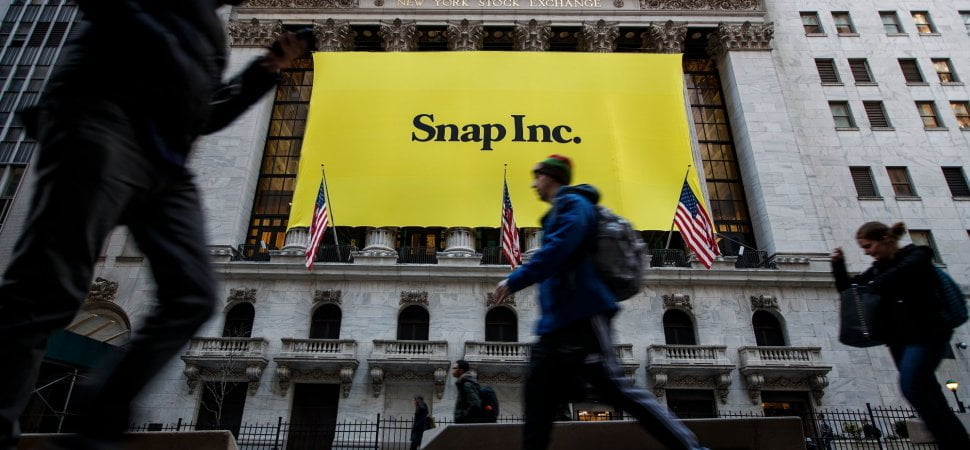
Four years ago, almost to the day, it was obvious that Snapchat should have taken the money: $3 billion Facebook offered to acquire it. But, no, the company’s founders insisted that it would be a bad move. Co-founder and CEO Evan Spiegel and, presumably, others were sure it was worth more. Not according to the earnings release today by parent Snap Inc.
Snap’s 2017 third quarter results were egregious. It was like watching the Coyote in a Road Runner Cartoon stop off the edge of a cliff and keep moving for a bit until, looking down, it realized the situation.
Revenue was up by 62%, which is wonderful. Only, analysts expected nearly $237 million in revenue instead of the $207.9 million the company had. There was little change in the number of users, and when you depend on advertising revenue to grow the business, that’s really bad. The quarter’s net loss of $443,159,000 was more than 3.5 times larger than the same period last year.
The company uses the non-standard measure of “adjusted EBITDA” to measure its, uh, success. Net income or loss excluding interest income and expense, other income or expense, depreciation, amortization, stock-based compensation and the related payroll tax expense, and “certain other non-cash or non-recurring items impacting” the bottom line. Even with that twisting, there was a $178,901,000 loss, which tells you just how many contortions it takes to massage the real loss.
Wall Street is not happy and Snap’s stock price dropped by 20 percent inside an hour. Spiegel and his co-founder, Bobby Murphy, are probably not happy either: Between them, their stock holdings lost $1 billion in value before the Coyote could finish the long drop with that soft pooft at the end.
If only Snap were an aberration on the West Coast tech scene. But it’s not. There’s billions of investment money in Uber, which is in the red a couple of billion dollars a year at this point. Juciero and its crazy-expensive juicers and juice packs finally packed it in a couple of months ago when it was clear few people were crazy enough to spend many hundreds on a machine and then $140 to $200 a month on juice. Heck, you could invest the cash and start your own small juice bar at that rate. And Juciero had only $118.5 million in venture money.
There’s an old saying: owe the bank $100 dollars and it owns you; owe it $100 million and you own the bank. This is what Silicon Valley and U.S.-style tech investing has come to. Forget a Microsoft of Apple or even a Facebook, where the companies went public after they were making real money. They build businesses that understand the profit concept, not almost eternal indebtedness that was supposed to turn the corner one day.
Here’s the difference: Snap’s founders lost a lot in paper worth on a company that, if you took away all the venture money, would be out of business. Microsoft launched Bill Gates who, back in 1986 when he was 30, was “probably one of the 100 richest Americans,” according to Fortune. Now he’s the richest man in the world.
Investors have been entranced by companies that seem like they should be worth billions and billions because they have scalable architecture and, doggonit, people like them. But it’s not enough to have a likeable business. Attention isn’t enough. Do VCs and money people not know the history of the dot com bubble? “Eyeballs,” a former crazy measure of success, don’t count for squat unless you have a solid business model that can create revenue and, eventually, profit.
Entrepreneurs would be better off to forget the nonsense that has passed for business acumen all too often and instead focus on the three basic questions: What needs to people have, what can you do to solve them, and how will you get paid? If you can’t answer all three, better keep working on the idea.
But, too many investors will keep hoping for the magical company that will make their fortunes, and too many entrepreneurs will want to be the mighty captain of industry. Things won’t change until a couple of these unicorns go spiraling into the desert floor so hard and fast that it makes a Coyote landing look like a short drop to a fluffy mattress.

